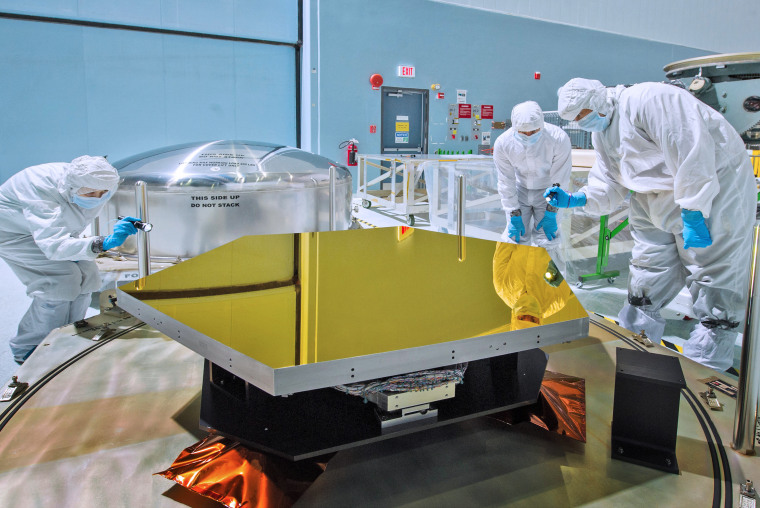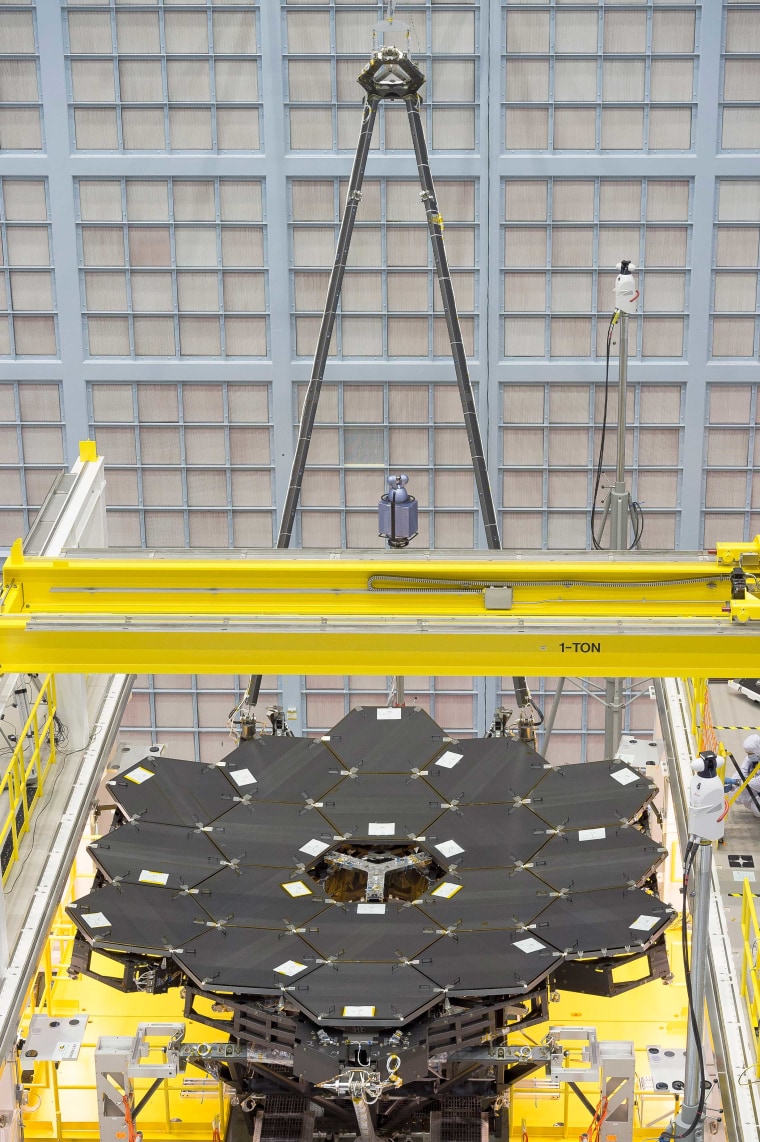This week NASA's James Webb Space Telescope (JWST) passed a major milestone - the complete assembly of its primary mirror. No small feat when that mirror is comprised of 18 hexagonal sections which, when put together, measure over 21 feet in diameter. In fact, each segment is about the size of a coffee table and weighs over 80 pounds!

JWST is slated for being launched in October 2018. It is primarily an infrared telescope (as opposed to optical like Hubble) and will study high-redshift (i.e., uber far) galaxies as well as dust disks around newly formed/forming stars where planets may be taking shape. These objects emit the majority of their radiation at infrared wavelengths: high-redshift galaxies because the expansion of the Universe between us and the galaxies stretches the light out, and dust because infrared wavelengths are smaller than dust grains so the light can pass through them and reveal what they may or may not be hiding.
When fully assembled, JWST has a footprint the size of a tennis court. If you're wondering how to launch a tennis court into space, you're not alone. Engineers had to figure out a way to fold-up the telescope, almost origami style, and have it unfold itself once it reaches its orbit. If all goes as planned, this is what should happen...
As insane as it may seem to have all those steps (which must all work perfectly), remember NASA's landed a ballistic projectile on Mars just over three years ago using pyrotechnics and a freaking sky crane.
To stay up to date on the remaining construction of JWST, you can follow along via webcams in the clean room at Goddard Space Flight Center (where JWST is headquartered).
Here's some more geek from the week:
- Police in the Netherlands are training eagles to attack drones. No really. [VIDEO]
- Apparently humans are the only species with chins and no one knows why.
- Scientists catch cancer in the act in a single cell.
- Interesting breakdown of the common ways new words enter our language.
- Selfie-related fatalities are a thing. Here's the data.
- How to catch a pro cyclist cheating with a hidden motor. HINT: use science!
- This physicist put his life on the line FOR SCIENCE. [VIDEO]
- How insect eyes inspire astronomical ones.
- This students at this grade school are sending a satellite into orbit via the International Space Station.
- Paul Rudd challenged Stephen Hawking to a game of chess, quantum chess that is. [VIDEO]
Keep on geeking!
@Summer_Ash, In-house Astrophysicist
